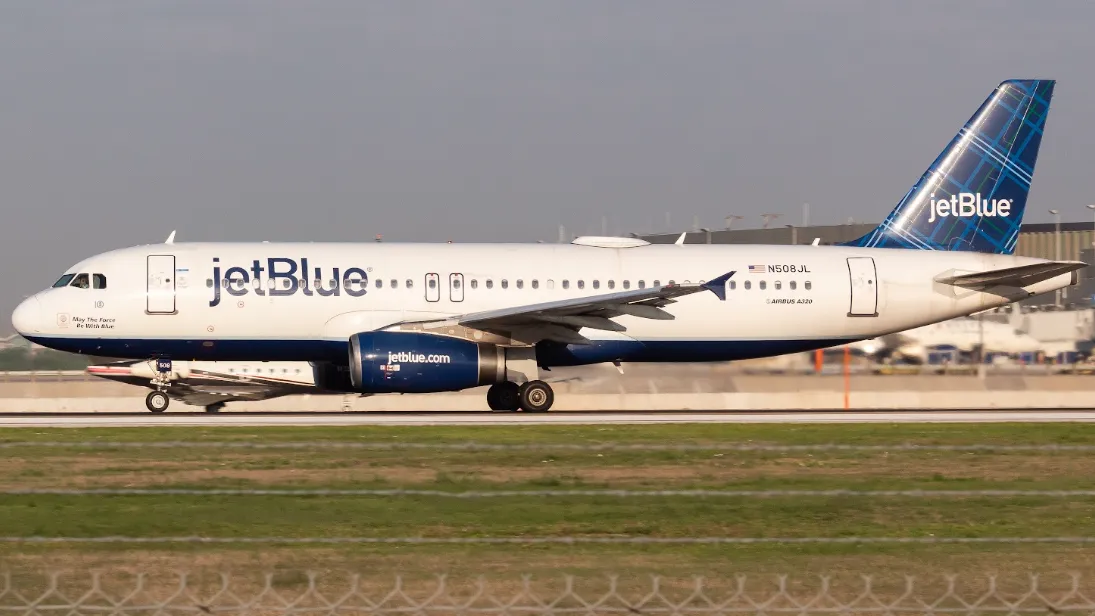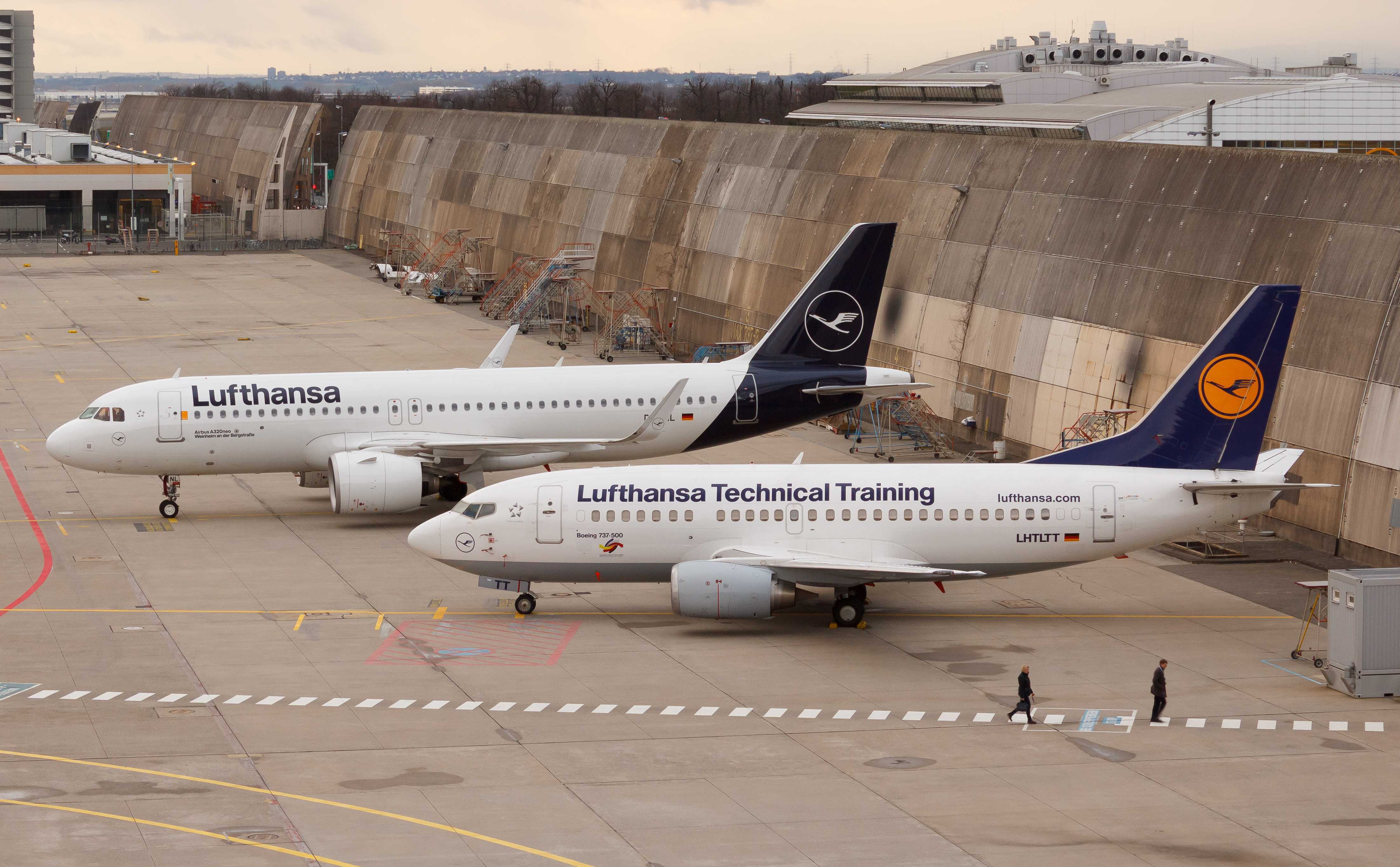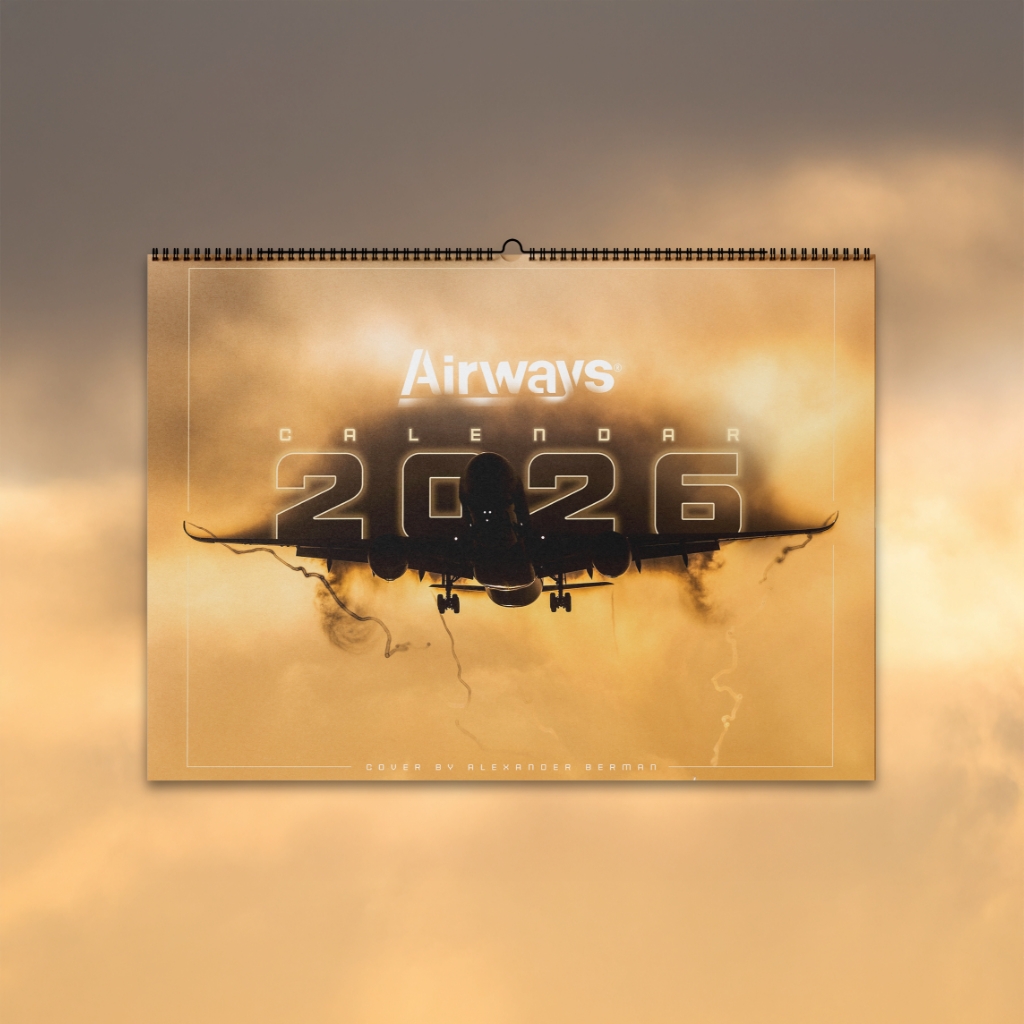DALLAS — In the world of commercial aviation, few aircraft competitions are as enduring as that between the Boeing 737 and Airbus A320.
These narrow-bodies have shaped the way the world gets around, becoming the workhorses of short- and medium-haul flying and the aircraft of choice for most low-cost carriers.
Their widespread adoption, continuous innovation, and battle-for-share sales rivalry have not only transformed the aviation industry but also reshaped access and affordability in air travel.
With both families continuing to advance their next generations, the 737 MAX and A320neo, the battle is as fierce today as it was when Airbus entered the scene in the 1980s.

Origins, Evolution
The Boeing 737 was twenty years ahead of its time, entering service in April of 1967. Boeing intended for the type to be a lighter, more economical sibling to the Boeing 727 for short-haul flights. Lufthansa was the initial buyer for the 737-100, but the 737-200, which was slightly larger, was much more popular. Pratt & Whitney JT8D engines, easily identified by their long, tube-shaped appearance, powered the initial versions of the aircraft.
As the airlines needed greater capacity and efficiency, Boeing manufactured the 737 Classic series during the 1980s. The CFM56 engines powered the -300, -400, and -500, a fuel efficiency step change. The 737 Classics also featured improved aerodynamics and new systems, making them attractive to airlines after worldwide.
By the mid-1990s, Boeing created the 737 Next Generation (NG) family, which included the -600, -700, -800, and -900. These had a new wing, new avionics, and more fuel-efficient CFM56-7 engines. Of all these, the 737-800 is a worldwide workhorse, operated by airlines on every continent. The 737 NG cemented Boeing's dominance in the 1990s and early 2000s.
To modernize the program, Boeing launched the 737 MAX in 2011. The Boeing 737-8, -9, and -10 feature next-generation CFM LEAP-1B engines, more efficient wingtips, and improved flight systems. The aircraft offered double-digit fuel savings and range compared to NG. Despite being adversely affected by delays following two deadly crashes and a worldwide grounding, Boeing has attempted to restore confidence in the MAX, and deliveries resumed in 2020.
The Airbus A320, however, followed later but with advanced features. First introduced in 1984 and entering service with Air France in 1988, the A320 had digital fly-by-wire controls, side-stick commands, and greater cockpit automation. Its slightly wider fuselage provided greater cabin comfort than the 737, providing airlines with a competitive advantage.
The initial A320-100 had a few production runs before being supplanted by the more capable A320-200, which included wingtip fences to reduce fuel burn. Airbus shortly expanded the family with the introduction of the larger A321 in 1994, the smaller A319 in 1996, and the short A318 in 2003. This flexibility allowed the A320 family to span several market niches.
The breakthrough came in 2010 with Airbus's introduction of the A320neo program, powered by new-generation CFM LEAP-1A or Pratt & Whitney PW1100G engines, along with aerodynamic enhancements such as sharklet winglets. The A320neo family provided up to 20 percent fuel saving, which made it extremely popular during the high-flying fuel price phase and sustainability push.
The A320 family became the highest-selling commercial airliner in history by 2019, overtaking the Boeing 737, a symbolic win in their long-standing competition.

Key Differences, Design Philosophies
While the 737 and A320 families compete head-on, each family possesses a different design philosophy. The Boeing 737 family builds on evolutionary development, with the same fuselage cross-section since the 1960s. Airbus, beginning later, utilized superior technology and design freedom to provide a more spacious cabin, digital cockpits, and increased crew commonality between models.
One of the most apparent differences is fuselage width. The A320 cabin is about seven inches wider than the 737 cabin, allowing for slightly wider seats. While they're both generally six-abreast in economy, passengers note that the A320 is a little more comfortable.
Inside the cockpit, Airbus focuses on safeguarding the flight envelope and automation via its fly-by-wire system. The pilots can talk to side-stick controllers, and the system maintains airplanes in safe-operating envelopes. Boeing, however, has a long history of direct pilot control, but the 737 MAX features more advanced flight control systems. The difference has implications that extend through training, pilot preference, and airline fleet choices.
Performance characteristics vary, too. The A320 family tends to offer lower maintenance intervals and simpler component replacement, with routine maintenance checks at typically 5,000 flight-hours. The 737, on the other hand, has tended to concentrate on straightforward, modular maintenance routines. Runway requirements and climb performance vary by type; the 737 has a tendency towards hot-and-high operation with its thrust-to-weight ratios.

Sales Competition, Market Forces
The A320 vs. 737 commercial competition is aviation's closest fight. Up to mid-2024, Airbus had amassed over 15,000 orders for the A320 family, while Boeing had counted some 14,300 for the 737. Although the Airbus program leads in overall sales, Boeing continues to reap the rewards of its previous relationships with North American carriers.
Geographical trends are unambiguous. Boeing is highly dominant in the United States, where Southwest Airlines operates the largest fleet of 737s. Airbus, however, has achieved incredible penetration in Europe and Asia-Pacific, where easyJet, IndiGo, and AirAsia operate the A320 family nearly exclusively. This division is not only technical but also political and industrial, with each manufacturer having intimate relationships with their respective regional airlines and governments.
Both planes have strong cost cases to carriers. One of the most critical issues is the commonality of the fleet, and the modularity of both fleets allows the operator to tailor capacity without significantly increasing the cost of training or maintenance. The intense rivalry between Airbus and Boeing has driven ferocious innovation, and both are still attractive to carriers under intense cost constraints.
The Low-Cost Carrier Revolution
The low-cost carrier (LCC) phenomenon is the most dramatic chapter in the A320 vs. 737 story. These carriers thrive on slimmed-down fleets, high utilization, and cost-effective maintenance, qualities better suited to new-generation narrow-bodies.
In Europe, Ryanair's (FR) loyalty to the Boeing 737 has made it the biggest 737 operator, with many 737-800s and increasing 737 MAX 8-200s. Ryanair's low-cost model leverages the commonality of its fleet, which makes training, maintenance, and operations easier.
On the other side of the continent, Wizz Air (W6) and easyJet (U2) placed their bets on the Airbus A320 family. Both carriers have large fleets of A320ceos and A320neos, with the option to upgrade to the A321neo, if necessary, on high-demand routes. The slightly wider cabin and fuel efficiency of the A320 make it a promising bet for denser seating configurations for airlines.
In North America, Southwest Airlines (WN) has been synonymous with Boeing 737 since the beginning, flying nothing else for decades. Its uniformity has been a bedrock of its success, facilitating quick growth and effective crew utilization. In contrast, Spirit (NK), Frontier (F9), and Allegiant (G4) have scaled their ultra-low models around the A320 family, taking advantage of the NEO's fuel efficiency to maximize profits.
Asia shares the same story of competition. Malaysia's AirAsia (AK) has built its empire on the A320, and India's IndiGo (6E) has become the world's largest A320 operator. Other carriers, such as Indonesia's Lion Air (JT) and China Southern Airlines (CZ), continue to operate massive fleets of both 737s and A320s, showing the region's enormous demand for air travel.
We cannot understate their support of the low-cost model. Their capacity to transport 150 to 240 passengers, along with strong range performance, allows carriers to operate high-frequency domestic routes as well as regional international routes. The fuel efficiency of the A320neo and 737 MAX also supports the low-cost model, enabling airlines to remain profitable even on low-margin competitive routes.
.jpg)
The Road Ahead
Both the 737 and A320 families are well into their latest generations, with none on the horizon as a near-term replacement. Airbus continues to enjoy solid sales momentum on the A320neo family, particularly the A321neo, an excellent range and capacity narrowbody. Boeing, rebounding from troubles of the 737 MAX program, remains committed to the airplane and is progressing with the larger MAX 10 as it seeks certification.
Environmental considerations now drive the future of these competitions. Airline companies seek to reduce emissions, and the A320neo and 737 MAX families of aircraft each have at least 15–20 percent lower fuel consumption than their predecessors. That is just the incremental improvements, though. Airbus and Boeing are also investigating both hybrid-electric propulsion and sustainable aviation fuels, and potentially even new clean-sheet designs by the 2030s.
One thing is sure: Neither plane is on the verge of obsolescence. With thousands of orders still to be fulfilled, both the A320 and 737 will continue to dominate the skies worldwide well into the next decade. Their ongoing competition ensures that airlines reap the rewards of cutthroat pricing, consistent innovation, and stable platforms on which to construct their networks.
Conclusion
The Boeing 737 and Airbus A320 are not just rival jets; they are icons of accessibility, efficiency, and democratization of flight. The 737 has been Boeing's workhorse for more than half a century, and Airbus's A320 brought new benchmarks with new technologies and passenger amenities.
Both have propelled the rise of low-cost carriers, transformed regional and global travel, and become the most productive families of aircraft in history. Their fight is not one of volumes or technical specifications; it is one of shaping the way billions of travelers move each year.
As airlines grow and sustainability becomes the future of aviation, the A320 and 737 will remain at the heart of commercial air transport. The low-cost carrier war is far from over.




